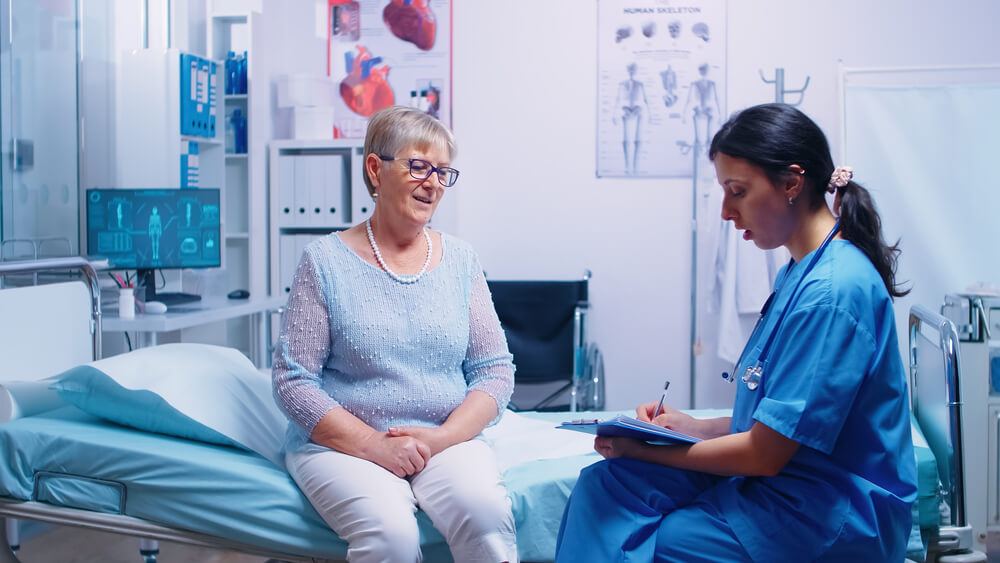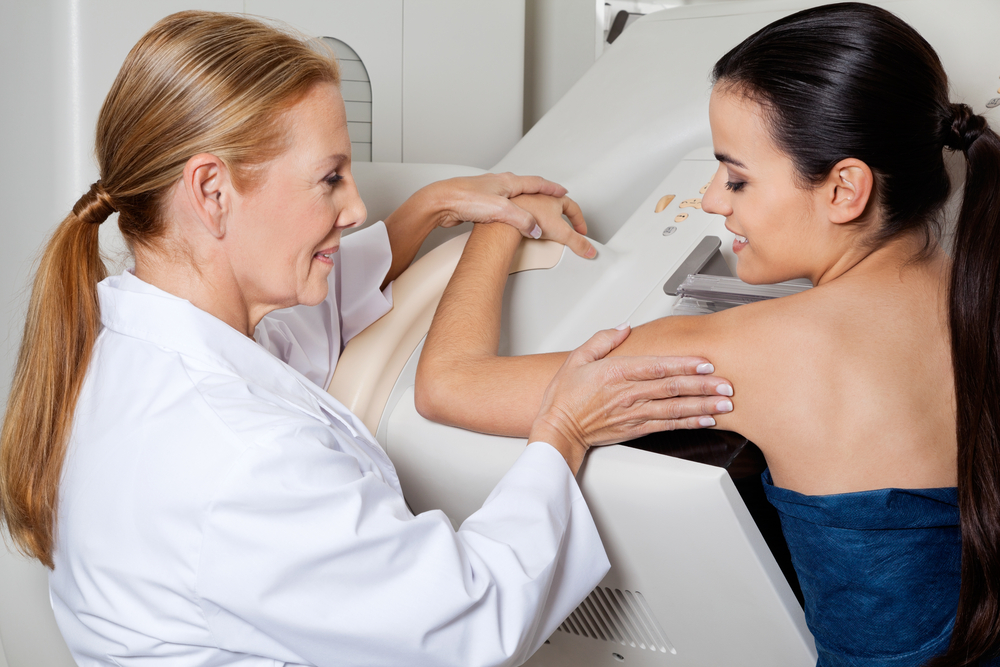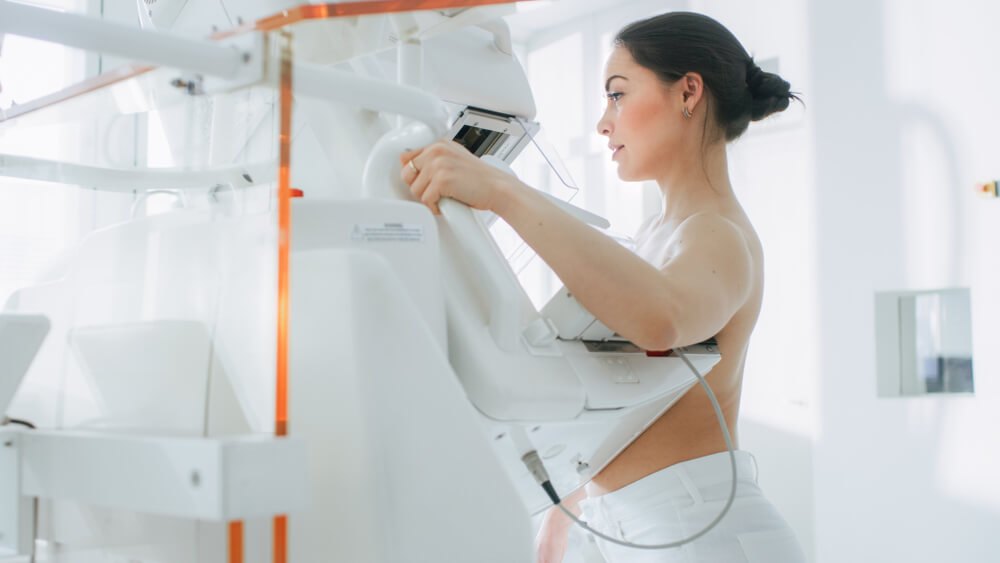A mammogram is a diagnostic tool used by doctors to check on the health of your breasts. While it can find abnormal spots that indicate cancer or another medical condition, it also ensures that you’re in good health. After an abnormal mammogram, the doctor will call you to discuss the tests that you need. Learning what to expect during your appointment and what a mammogram shows can help you decide when to call the doctor.
When Should You Have a Mammogram?
The mammogram age suggested by doctors is as early as 40. If you have a family history of breast cancer or never had any type of cancer screening before, you may want to start at a younger age. Women between the ages of 45 and 55 should have a mammogram performed once a year. This allows the doctor to identify any changes from one year to the next.[1]
Once you reach the age of 55, you can schedule mammograms every other year. Mammograms can diagnose breast cancer at an early stage.[1]
Preparing for Your Appointment
Many women worry about what to expect during a mammography and what they can do at home to prepare for the appointment. You should pick a facility that handles mammograms and visit the same one every year. This ensures that the doctor can compare your results to previous years.[2]
You should avoid deodorant and similar products that can interfere with the images and cause white spots on the film. Many women also wear a loose-fitting shirt that they can easily remove. You can leave your pants or skirt on to feel more comfortable during the imaging.[2]

Diagnostic vs. Screening
Doctors use mammograms in two different ways: as a diagnostic or screening tool. A screening mammogram is best for women with a family history of breast cancer as well as those who want to make sure that they are healthy. The doctor uses the image to make sure that there are no lumps or abnormal spots in your breasts.[3]
A diagnostic mammogram is one that a doctor performs if there are lumps or unusual spots. This kind of mammogram can help your doctor identify the causes of any breast changes, too. Breast pain, discharge from one or both nipples, changes in the way your skin looks, and darkening of the nipples are some reasons why your doctor might schedule you for a diagnostic mammogram.[3]
When to Call After a Mammogram
Whenever your doctor does tests on you, you may spend a lot of time worrying about your results. It can make you feel a little crazy because you don’t know if you should call or keep waiting for a callback. The average time that it takes to get the results is two weeks. If you have a 3D mammogram, you might get your results quicker.[4]
A 3D image allows the doctor to combine multiple shots of your breast into one three-dimensional result. It may take less time to get your results when you have a diagnostic mammogram done. This is because the doctor already knows what to look for and wants to begin treatment as soon as possible. If you had a mammogram done and do not hear from the doctor within two weeks, you should call the office.[4]
Abnormal Results
Doctors will often call their patients quickly if they have an abnormal mammogram. Though you may feel scared when you get the call of an abnormality, it can indicate a variety of things—some of which are easy to treat. There is a chance that you simply need a second mammogram due to issues with the first screening. This may occur due to thick or dense breast tissue as well as scarring that prevents the doctor from getting a good look.
Even if the doctor finds an abnormality, it doesn’t automatically mean that you have breast cancer. The problem seen on the screen might relate to some type of mass in your breast. You might have scar tissue from a past injury or some type of calcification. The doctor might find a cyst in the breast and want to send you for more testing.[5]
Additional Testing
A mammogram is just one of the tools and tests that doctors use for female patients. If your mammogram shows an abnormality, the doctor will likely order additional tests to determine the cause of the problem. You will likely need an ultrasound as well as a diagnostic mammogram. These tests allow the doctor to focus on the abnormality.[5]
During the ultrasound, you lay flat on the table as a technician uses a wand to get a better look at your breast tissue. Though you may feel a little uncomfortable as the wand moves across your skin, you shouldn’t feel any pain.[5]
An MRI is another test that the doctor might order. MRI machines are large but have a small tube that you sit inside. Some women feel claustrophobic, especially as an MRI can take up to an hour to perform. If the test shows no issues or signs of problems, the doctor will usually ask you to schedule a mammogram for the following year and recommend that you keep an eye out for unusual symptoms or changes.[5]
Breast Biopsy
If you have an abnormal mammogram that other testing cannot identify, the doctor may recommend a biopsy. The type of biopsy done will depend on factors such as the size of the abnormality, if you have any other medical problems, whether you have multiple spots or lumps the doctor needs to check, and the location of the abnormality.[6]

Doctors can often use a small needle aspiration on smaller lumps. They insert a needle into your breast and pull out a small portion of the tissue to examine it.[6]
With a core needle biopsy, the doctor uses a larger and thicker needle that can reach deep inside your breast. A surgical biopsy is usually only done if a mammogram and one or more tests reveal at least one lump. This requires anesthesia that lets you sleep through the procedure. The doctor removes a portion of the mass for additional testing. Keep in mind that you only need a biopsy and other types of testing if your mammogram reveals abnormalities.[6]
Get the Mammogram Care That You Need in Miami
We’d love to answer more of your mammogram questions. At Breast Care Center Miami, we want you to feel comfortable during a mammogram and during any additional testing. We are open on weekdays from 9:00 a.m. to 5:00 p.m. and can schedule your appointment early or later in the day to fit your schedule.
You’ll receive a comprehensive exam that allows you to talk about your needs and concerns as well as a treatment plan customized for you. We also offer comprehensive screening and genetic counseling for women with a family history of breast cancer. Call today to schedule the right time to talk with a doctor before or after a mammogram.
References:
[1] https://www.cancer.org/healthy/find-cancer-early/cancer-screening-guidelines/american-cancer-society-guidelines-for-the-early-detection-of-cancer.html
[2] https://www.cancer.org/cancer/breast-cancer/screening-tests-and-early-detection/mammograms/mammograms-what-to-know-before-you-go.html
[3] https://www.mayoclinic.org/tests-procedures/mammogram/about/pac-20384806
[4] https://knowyourgirls.org/resources/mammogram-faqs/
[5] https://www.cancer.org/latest-news/if-youre-called-back-after-a-mammogram.html
[6] https://www.cancer.org/cancer/breast-cancer/screening-tests-and-early-detection/breast-biopsy.html






